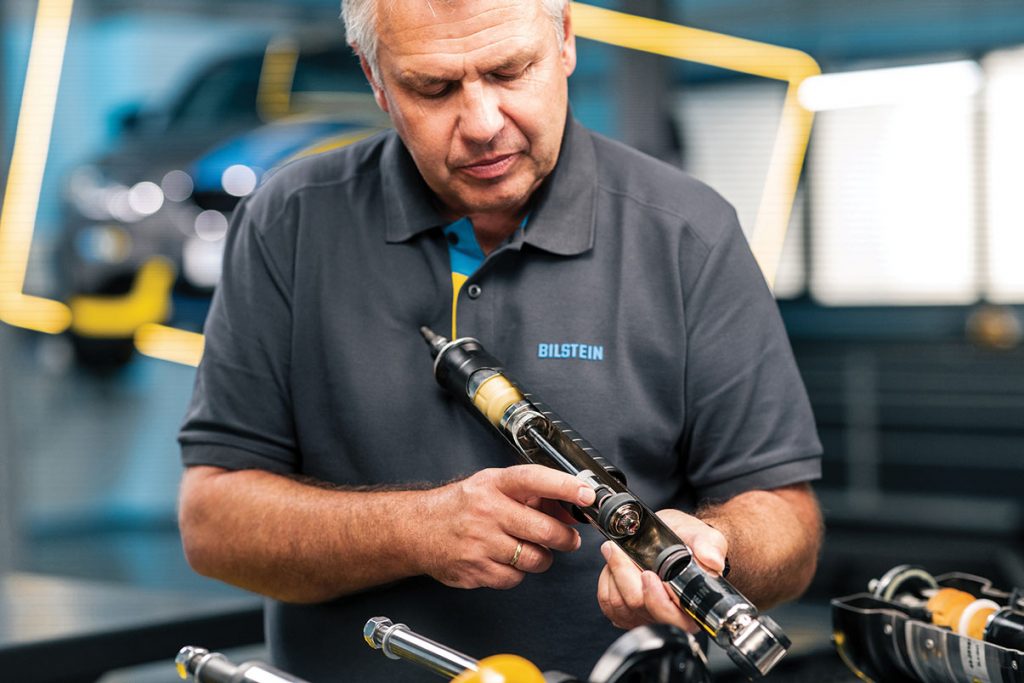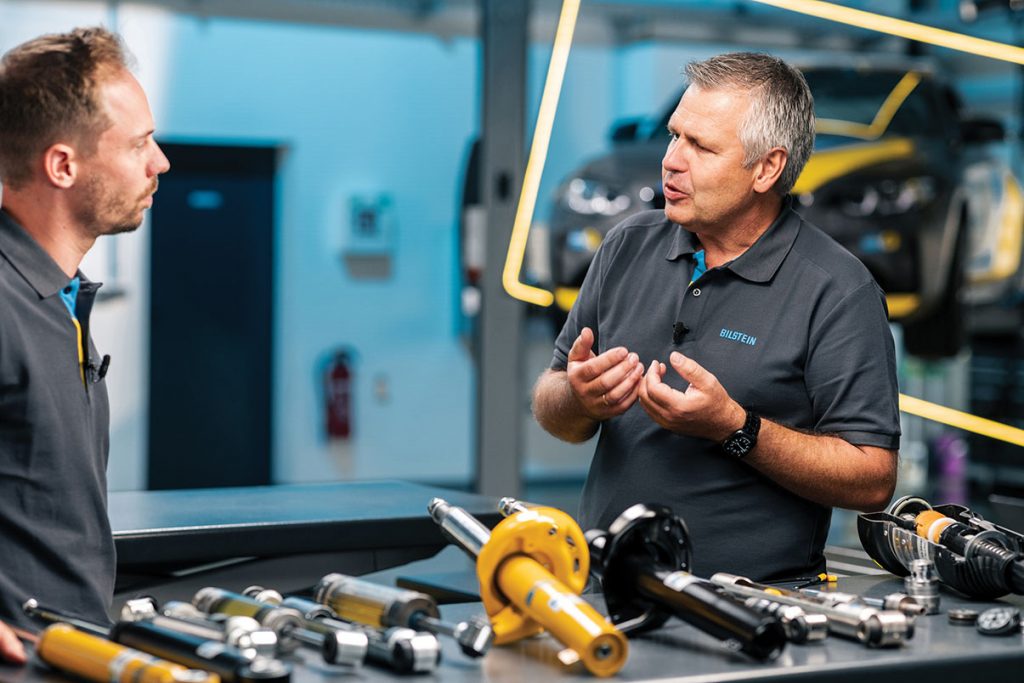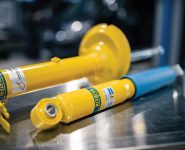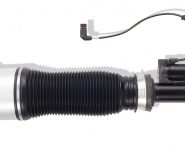SUSPENSION ANALYSIS TIPS FROM BILSTEIN
The suspension expert has released its latest Suspension Fundamentals video, focusing on shock absorber fault analysis and diagnosis

Not all shock absorbers are the same. From Mono-tube shock absorbers to twin-tube shock absorbers and electronic systems, each different type requires a different approach to fault analysis in the workshop.
Bilstein says all the information workshops need on this subject can be found in part five of its video series, Suspension Fundamentals – powered by Bilstein Academy – the highlights of which are detailed here.
Mono-tube and twin-tube shock absorbers
Whether you are dealing with a mono-tube or a twin-tube shock absorber is not always obvious at first glance.
“Shock absorbers where the tube tapers are usually a twin-tube shock absorber because there is another tube inside,” Bilstein Academy Head, Rainer Popiol, said.
“The mono-tube shock absorber is always cylindrical in its design because the working piston travels through the entire tube.”
In the mono-tube shock absorber, the working piston operates in a tube, with the working chamber (filled with oil) and the piston chamber located here between the closure package and a separating piston.
From the piston chamber, the oil is pressed back and forth through the valve (spring disc pack) in the working chamber, creating the required damping forces for the compression and rebound stages.
Behind the separating piston is the gas chamber, with this gas having two tasks.
“One task is to compress the oil column so that no bubbles form – so-called cavitation. This ensures the mono-tube shock absorber remains stable,“ Rainer said.
“In addition, the gas chamber must accommodate the volume of the piston rod, because when the shock absorber is working, the piston rod is pressed into the working chamber.”

“In the twin-tube shock absorber, the working piston also works in a working chamber filled with oil. When the piston rod is pressed into the shock absorber, the oil is displaced and forced through the bottom valve into the compensation chamber, which is located between tube one and tube two.”
“Unlike the mono-tube shock absorber, however, the twin-tube shock absorber does not work independently of position.”
“If the shock absorber is inclined more than 45 degrees, it pulls the gas into the inner tube due to the inclined position. Then the gas pressure shock absorber no longer works force-locked.”
Whether it is a mono-tube shock absorber or a twin-tube shock absorber, mechanics have to keep a few things in mind.
“Usually it is like this: if the shock absorber loses oil, it becomes softer. But then there is a type of construction where the shock absorber becomes tighter,“ Rainer said.
“This means that the piston rod no longer enters the shock absorber properly. This is the mono-tube shock absorber.
“When it loses oil, the separating piston moves upwards towards the working chamber. At some point the piston rod then touches the separating piston and that gives a loud knocking noise and the car behaves harder.”
MacPherson struts are usually used on the front axle. Bilstein sates that sturdy piston rods with a larger diameter are used because they take on wheel guidance tasks and therefore have to absorb large forces. Often, therefore, mono-tube shock absorbers are used in an upside-down design.
“Then the damper is completely turned around. The piston rod is no longer at the top but at the bottom. Two plain bearings then take over the guidance so that the high forces can be transmitted. With the mono-tube shock absorber, no oil can escape from the top because the piston rod is at the bottom,“ Rainer explains.

Electronic shock absorber systems
Electronic systems can usually be recognised by their wiring and externally mounted valves.
“I check the electronic system with my diagnostic tools, go through the fault memory and look at the whole thing,“ Rainer said.
“I check if something is wrong with the cable, if I have a cable break or too much contact resistance, etc.”
But looking at the electronic system is only part of the fault analysis, warns Rainer.
“If the driving behaviour is still bad, then it is quite possible that we are dealing with normal wear and tear. And then I have to check in the same way as with the passive systems,“ Rainer said.
For further information, check out Part 5 of Suspension Fundamentals – Powered by Bilstein Academy, on workshop.bilstein.com/en/suspension-fundamentals/
Photos: Copyright Bilstein 2022









